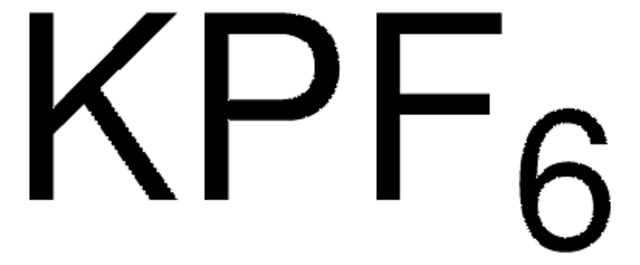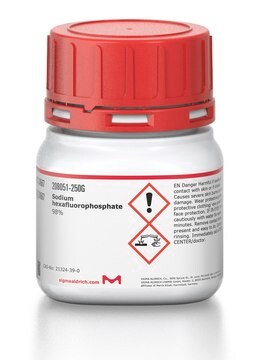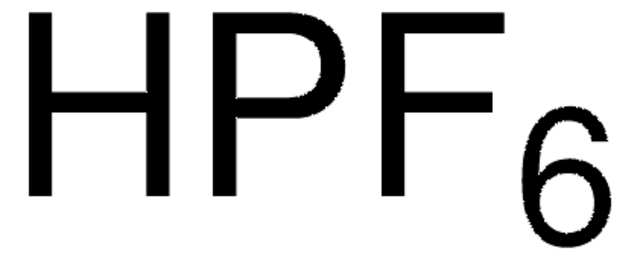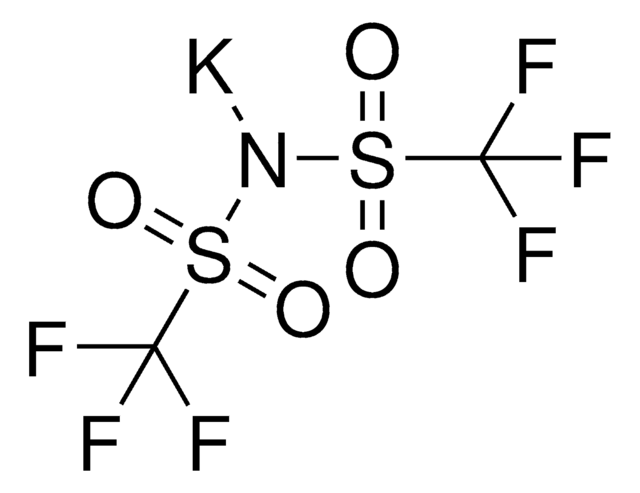515973
Potassium hexafluorophosphate
99.5% trace metals basis
Synonyme(s) :
Potassium fluophosphate, Potassium hexafluorophosphate, Potassium hexafluorophosphate (KPF)
About This Item
Produits recommandés
Qualité
for analytical purposes
Essai
99.5% trace metals basis
Forme
solid
Impuretés
≤5500.0 ppm Trace Metal Analysis
Pf
575 °C (lit.)
Densité
2.75 g/mL at 25 °C (lit.)
Chaîne SMILES
[K+].F[P-](F)(F)(F)(F)F
InChI
1S/F6P.K/c1-7(2,3,4,5)6;/q-1;+1
Clé InChI
YZDGRYDIGCWVND-UHFFFAOYSA-N
Vous recherchez des produits similaires ? Visite Guide de comparaison des produits
Application
- Multifunctional potassium hexafluorophosphate passivate interface defects for high efficiency perovskite solar cells: Potassium hexafluorophosphate (KPF6) is used to enhance the interface between SnO2 quantum dots and perovskite (Z Wang et al., 2021).
- Potassium hexafluorophosphate additive enables stable lithium–sulfur batteries: An optimized amount of KPF6 added to the electrolyte improves the cycling stability of lithium-sulfur batteries (J Li et al., 2020).
- Dual electrolyte additives of potassium hexafluorophosphate and tris (trimethylsilyl) phosphite for anode-free lithium metal batteries: KPF6 and tris(trimethylsilyl) phosphite enhance the electrochemical performance of anode-free lithium metal batteries (TM Hagos et al., 2019).
Mention d'avertissement
Danger
Mentions de danger
Classification des risques
Eye Dam. 1 - Skin Corr. 1B
Code de la classe de stockage
8A - Combustible corrosive hazardous materials
Classe de danger pour l'eau (WGK)
WGK 1
Point d'éclair (°F)
Not applicable
Point d'éclair (°C)
Not applicable
Équipement de protection individuelle
Eyeshields, Faceshields, Gloves, type P3 (EN 143) respirator cartridges
Faites votre choix parmi les versions les plus récentes :
Déjà en possession de ce produit ?
Retrouvez la documentation relative aux produits que vous avez récemment achetés dans la Bibliothèque de documents.
Les clients ont également consulté
Notre équipe de scientifiques dispose d'une expérience dans tous les secteurs de la recherche, notamment en sciences de la vie, science des matériaux, synthèse chimique, chromatographie, analyse et dans de nombreux autres domaines..
Contacter notre Service technique











